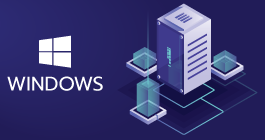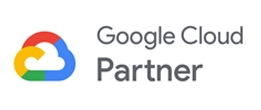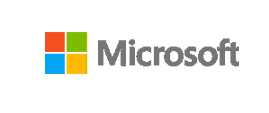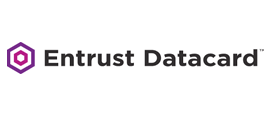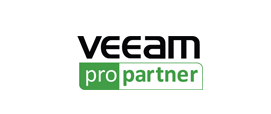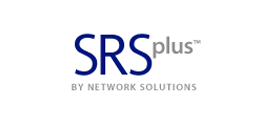-
Welcome to My Website
This is a text box. Write your own content here. This is an excellent place for you to add a paragraph.
Netway Support Center
เราพร้อมบริการคุณ ตลอด 24 ชั่วโมง
Payment & Invoices
Products Knowledge










Zendesk




Other Cloud Products
Technical Knowledge
Website/Install Application & FTP
Linux Technical Knowledge
Windows Technical Knowledge
Database
Blog list (8)
How to login to gmail with your Google account
How to log in to Gmail with your Google AccountIf you already have a Google Account, you can use it to log in to Gmail.Use your browser's location bar to go to gmail.com.Enter your Username. Putting @gmail.com on the end is not necessary.Then, enter your Password.By default, you will be set to Stay signed in. Deactivate this checkbox if you would prefer to be logged out automatically.To finish, click Sign in.You have now been logged in to your Google Account and taken to your Gmail inbox.To Sign out, simply click this link.This completes the tutorial. You now know how to log in to Gmail using your Google Account. Netway Tutorial วีดิโอแนะนำผลิตภัณฑ์ cPanel Panel เพื่อช่วยตอบทุกข้อสงสัย และแนะนำวิธีการใช้ที่ง่ายเพื่อความสะดวกรวดเร็วสำหรับคุณ หากท่านต้องการสอบถามข้อมูลเพิ่มเติมด้านผลิตภัณฑ์สามารถติดต่อได้ที่ 02-055-1095หรืออีเมล support@netway.co.th
How to view and reply to email conversations in gmail
How to view and reply to email conversations in GmailIn this tutorial, you will learn a little bit about the unique way Gmail displays your messages.This tutorial assumes that you are already logged in to Gmail.Rather than showing a single entry for each individual email, Gmail groups an email together with all replies - sort of like a thread on a forum. This is referred to as a conversation.As indicated by the (4) aside the first conversation, it contains four messages. The participants in the conversation are listed to the left of that.To view a conversation, you can click anywhere on its row in the list, except on the controls at left.Notice that this conversation only contains one message.Click the Newer link to go to the conversation directly before this one in the Inbox.The Older link works in a similar fashion.There are a number of actions that you can perform on this conversation using the buttons directly below; we'll look at how to use some of these in the tutorials that follow.Click this link if you want to open the conversation in a New window.Use this link to Print all messages in the conversation.Scroll down.Gmail will collapse all the messages in a conversation that you've read before, except for the newest one. Click on a message's title to expand it.Or, click Expand all to expand every message in the conversation.Collapse all reverses that action.Clicking show details will display some more information about this particular message.In addition to Reply and Forward, you can also perform a number of actions on a specific email in a conversation. Click the down arrow button to show these options.To begin making a reply, you can also click in this textarea......and a standard Gmail composition form will appear.Click Discard if you no longer wish to make a reply.To return to the Inbox, click the Back to Inbox link.That's it! You now know how to view and reply to email conversations in Gmail.For more information about managing your email messages and conversations, be sure to check out the tutorials that directly follow this one. Netway Tutorial วีดิโอแนะนำผลิตภัณฑ์ cPanel Panel เพื่อช่วยตอบทุกข้อสงสัย และแนะนำวิธีการใช้ที่ง่ายเพื่อความสะดวกรวดเร็วสำหรับคุณ หากท่านต้องการสอบถามข้อมูลเพิ่มเติมด้านผลิตภัณฑ์สามารถติดต่อได้ที่ 02-055-1095หรืออีเมล support@netway.co.th
How to manage labels in gmail
How to manage labels in GmailYou may be surprised to notice that Gmail doesn't allow you to create folders to store your emails in. Instead, you have the Labels system.A conversation can have any number of labels applied to it -- not just one, as is usually the case with mail clients that use folders.By default, Gmail has a number of different Labels that can be applied to your conversations, such as Inbox, Sent Mail, Personal, and Travel. Some of these are System labels, while others are Custom labels.Each custom label has a box next to its name, providing you with a quick way to edit its properties.Here, you can add or remove a color to a label, allowing you to identify it at a glance. You can also rename, hide, or delete a custom label.Click on a color to tell Gmail to use it for this label.Now, let's hide this label.Notice that Personal no longer shows up above Travel.To find it in the menu, click the link entitled 7 more.Now you can see all the other labels that have been marked as hidden.Let's un-hide the Personal label now.You can Manage labels or Create a new label using the links at the bottom of this popup menu.Or, do so by first clicking the Settings link in the top right corner of the page......and then going to the Labels tab.System labels are at the top, and you'll notice that they cannot be removed. All system labels except for Inbox can be shown or hidden.Let's show the Spam label. Click its show link.Notice that Spam is now visible in the main menu, and that the 6 more link has changed to 5 more.Scroll down.Here are the Custom labels. All of these can be shown, hidden, or removed to your liking.Let's remove the Travel label by clicking here.Click OK to confirm.Note that removing a label will not delete the messages with that label; a message that has no labels will still show up under All Mail.To rename a custom label, simply hover over its title and click into the text field that appears.To finish editing the label, click off of it or just press Enter.The labels will be automatically sorted in alphabetic order.Next, let's recreate the Travel label using this form.Click Create.We'll also show the Receipts label.To finish, let's scroll up and examine our changes.As you can see, all of the changes we made on this page took effect immediately.This tutorial is now complete. You've seen how to manage labels in Gmail, but watch the tutorials that follow to find out how to put them to use. Netway Tutorial วีดิโอแนะนำผลิตภัณฑ์ cPanel Panel เพื่อช่วยตอบทุกข้อสงสัย และแนะนำวิธีการใช้ที่ง่ายเพื่อความสะดวกรวดเร็วสำหรับคุณ หากท่านต้องการสอบถามข้อมูลเพิ่มเติมด้านผลิตภัณฑ์สามารถติดต่อได้ที่ 02-055-1095หรืออีเมล support@netway.co.th
How to manage email conversations in gmail
How to manage email conversations in Gmail In the previous tutorial, we showed you how to manage labels in Gmail. Before you find out how to actually apply those labels to conversations, you need to learn how to select and manage conversations. To begin, you should know the different ways to select conversations in Gmail. First, you can select them one by one. Use their checkboxes to do that. We are currently viewing the Inbox, so clicking the All or None links will select or deselect all conversations in the Inbox, respectively. Read and Unread will select only those conversations that have or have not been read. Starring a conversation allows you to keep track of those you feel to be more important. Click the greyed out star next to a conversation to star it. With that done, we can now take advantage of the Starred and Unstarred selection links to select those conversations that have been starred and those that haven't. Now that you know how to select conversations, let's see what we can do with them once they've been selected. Click More actions. This submenu allows you to perform a number of useful actions. Let's mark this conversation as unread. Notice that it now shows up in bold. Now, let's Archive all the Unstarred conversations. When you archive conversations, they are no longer visible in the Inbox. They haven't been deleted or moved to the Trash; they'll still show up everywhere they would normally, just not in the Inbox. That means our archived messages will always show up under All Mail. Here they are, in All Mail. Archived conversations can be moved back to the Inbox using this button. Next, let's select the same messages, but this time Delete them, thus moving them to the Trash. As this message informs us, if we move conversations from All Mail to the Trash, they will no longer be visible anywhere but the Trash. All labels previously applied to the conversations will not work unless they are moved back out of the Trash. Click OK to proceed. Let's find the conversations in the Trash. With this button you can delete specific messages forever, while Empty Trash now allows you to delete every message that currently resides in the Trash. You should note that messages that have been in Trash more than 30 days will be automatically deleted. Google recommends you don't move conversations to the Trash unless you're absolutely sure you won't want them in the future; instead, use the Archive feature. With over seven gigabytes of storage available to every Gmail account, you're more than capable of keeping every single message ever sent or received by your account. We'll move these back to the Inbox. First, select each one. Then, click in this area, hold down the mouse button, and drag the cursor over to the inbox. You should see a message pop up underneath your cursor indicating how many conversations you're dragging -- in our case, three. Now let go of the mouse button. The conversations now reside in the Inbox. Go there now. You should also know how to report a conversation as spam. Simply choose one in the list... ...then click Report spam. Notice that Spam now has one unread message in it. Spam functions similarly to Trash. You have a Delete forever button plus a Delete all spam messages now link. Messages that have been in Spam for more than 30 days will automatically be deleted -- just like with Trash. If you have incorrectly marked a message as spam, the Not spam button will be of assistance. Choose the message. Then click Not spam. The conversation has been unmarked as spam and moved back to the Inbox. You should note that all of the management buttons will function exactly the same way when viewing a conversation. Having already selected a conversation by viewing it, the buttons will function right away. For example... open a conversation. All of these actions will function using the conversation that is currently open. This completes the tutorial. You now know how to manage conversations in Gmail. To find out how to put all the knowledge from the past two tutorials together, watch the tutorial that follows. Netway Tutorial วีดิโอแนะนำผลิตภัณฑ์ cPanel Panel เพื่อช่วยตอบทุกข้อสงสัย และแนะนำวิธีการใช้ที่ง่ายเพื่อความสะดวกรวดเร็วสำหรับคุณ หากท่านต้องการสอบถามข้อมูลเพิ่มเติมด้านผลิตภัณฑ์สามารถติดต่อได้ที่ 02-055-1095หรืออีเมล support@netway.co.th
How to use labels in gmail
How to use labels in Gmail This tutorial will show you how to use labels in Gmail to organize your email conversations. If you've seen the previous two tutorials, you should know what labels are and how to manage them, and how to manage conversations. If you haven't watched the previous tutorials, we recommend that you do so before proceeding with this one. The Move to and Labels submenus in the actions menu, directly below, are the two ways you have to label conversations. To use either, you must first select at least one conversation. We'll start with the Labels submenu. Click this button to activate it. Here, you can choose one or more of your existing labels to apply to the selected conversation(s). The search box may be useful if you have many labels. You can also create new labels and go to the label management area using these links. Let's label the selected conversation as both Business and Personal. Click Apply. This conversation has now been labelled Business and Personal. You can see its labels here, next to its title. If you watched the first tutorial on Labels, you will have seen how to change a label's color. Let's do that again now, to show you its usefulness. Click here. Choose a color. Notice -- the color has changed here, too. Next, let's see a shortcut method for applying a single label. Deselect this conversation, and select the two beneath that. Open Labels. This time, instead of clicking on the checkbox next to the label, click on its name. Now, let's see how Gmail treats a selection wherein not all conversations have the same labels. Select this conversation. Instead of showing a checkmark in the box next to each label, a line is displayed to let us know that some but not all of the conversations use this label. Simply click the box as before to apply a label to all selected conversations... ...and the line becomes a checkmark. Click Apply. The Move to feature is similar to the Labels feature, the difference being that Move to will remove the label we are currently viewing (Inbox) from the conversation and replace it with the one we choose. To demonstrate, let's select the only conversation that hasn't been labelled yet. Click None. Select this conversation. Open Move to. As you can see, this has the same basic layout as the Labels submenu. The checkboxes have been removed -- you can only move a conversation from one label to one other. We're also now able to move conversations to Spam and Trash (these weren't listed under Labels). We'll move this conversation to Travel. Another way to move a conversation is to drag it over to the label in the menu. Click and drag this conversation over to Personal. Let go of the mouse once the label is highlighted. There is one last way to manage a conversation's labels. Open a conversation. At the top of the conversation, you can see a list of labels with an X next to each. Click a label's X to remove it from this conversation. If instead you click on the label's name... ...you'll be taken to a list of all conversations that share that label. This is the end of the tutorial. You now know how to use labels in Gmail.
-
Domain
-
Hosting
-
Cloud & Managed
-
SSL
-
Email
- เรียนรู้เพิ่มเติม
- Microsoft 365 รุ่นต่างๆ
- Microsoft 365 สำหรับธุรกิจ
- Microsoft 365 สำหรับใช้งานที่บ้าน
- ทดลองฟรี
- G Suite
- เทคนิคลดต้นทุนอีเมล Microsoft 365 มากกว่า 28%
- เทคนิคลดต้นทุนอีเมล G Suite มากกว่า 19%
- Zimbra-Based Email
- Traditional Email by cPanel
- Physical to Cloud Migration
- Exchange Server to Microsoft 365 Migration
- G Suite to Microsoft 365 Migration
- Microsoft 365 to G Suite Migration
- Cloud to Cloud Migration
-
Microsoft
-
Google
-
Marketing
-
Others
-
Blog
-
Microsoft Teams
-
microsoft-365-business-premium
-
test-slide
-
Order
-
Promo
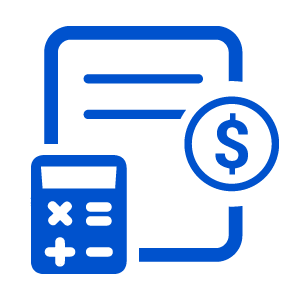

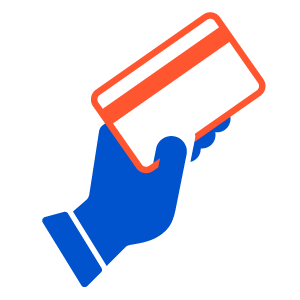
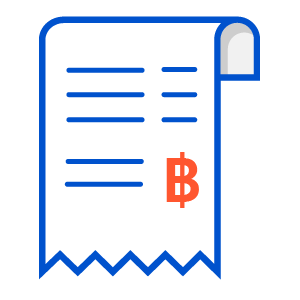

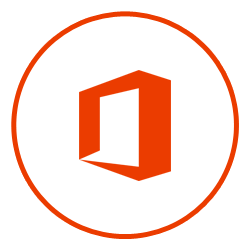





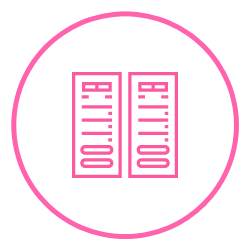
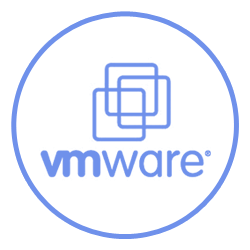









.png)



.png)


